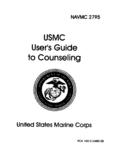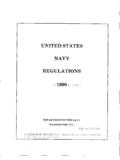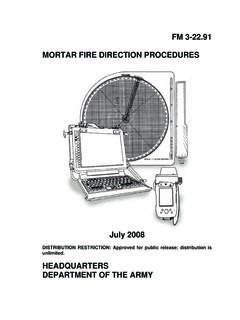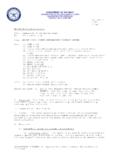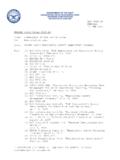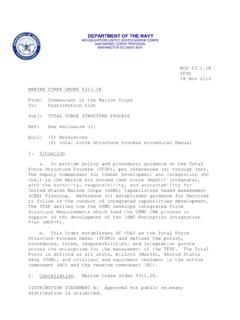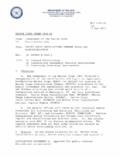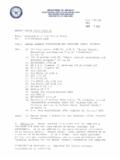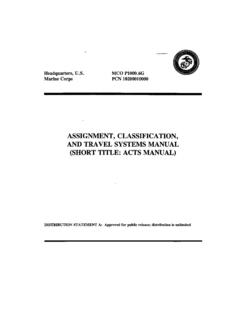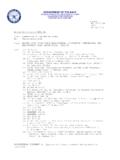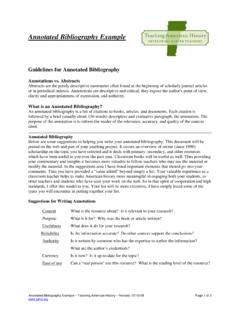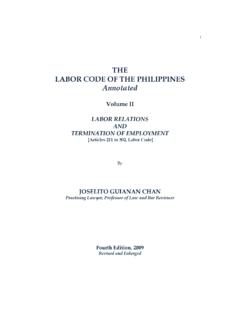Transcription of First Division Marines debark from a UH-
1 First Division Marines debark from a UH-34D helicopter of HMM-163 in the earlymorning of11 October1967,to beginOperation Medina. This search-and- destroyoperation was a joint -South Viet-namese effort conducted in an area12milessouth of Quang Tri city.(Departmentof Defense[USMC]PhotoA421900)THE Marines IN VIETNAM1954-1973An Anthology andAnnotatedBibliographySecond EditionHISTORY AND MUSEUMS DIVISIONHEADQUARTERS, U. S. MARINE CORPSWASHINGTON, in the Marine CorpsVietnam SeriesThe Marines in Vietnam, 1954-1973, An Anthology andAnnotatedBibliography,1974; reprinted . Marines in Vietnam, 1954-1964, The Advisory andCombatAssistance Era, Marines in Vietnam, 1965, TheLandingand theBuildup, in Vietnam, 1966, An Expanding War, Marines in Vietnam, 1967, Fighting the North Vietnamese,1984In . Marines Marines . Marines .
2 Marines . Marines . Marines inVietnam,January-May1968 Vietnam, June-December 1968 Vietnam, 1969 Vietnam, 1970-1971 Vietnam, 1971-1973 Vietnam, 1973-1975 Functional Histories SeriesChaplains with Marines in Vietnam, 1962-1971, Marine Corps Aviation In Southeast Asia, 1962-1975,in preparationLibrary of Congress Card No. 77-604776 PCN190 003093 00 For sale by the Superintendent of Documents, . Government Printing OfficeWashington, . 20402 ForewordThe Marines in Vietnam, 1954-1973, An Anthology and annotated bibliography ,based on ar-ticles that appeared in Naval Institute Proceedings, Naval Review,andMarine CorpsGazette,has served well for 14 years as an interim reference on the Vietnam War. It has both com-plemented and supplemented our official histories on Marine operations in Vietnam. Since itspublication in 1974, however, events in Vietnam and the appearance of additional significant ar-ticles in the three periodicals have made both the anthology and bibliography somewhat dated.
3 Thisexpanded edition extends the coverage of the anthology to 1975 and the entries in the bibliographyto editors have added 10 articles to the 13 that appeared in the First edition. One article on firebases in the original has not been included. The format remains basically the same. The First 16 ac-counts give a chronological presentation of the Marine participation in the Vietnam War, from onelone Marine advisor in 1954, through the buildup and withdrawal of major forces, the "Easter Of-fensive" of 1972, the evacuation of . citizens from both Phnom Penh and Saigon, and theMayaguezincident in May 1975. In the second group, the remaining six articles are arrangedtopically. They concern aviation, logistics, civil affairs, Navy medical support, amphibious doctrine,and maritime support. Part II of the publication is an annotated bibliography of articles from1954-1984, prepared by the Vietnam writers in the Histories Section.
4 Although recognizing thatmany fine articles pertaining to Marines in Vietnam have appeared in numerous other periodicals,the History and Museums Division , because of limitations of time and resources, confined its atten-tion to the three aforementioned wish to thank the editors of theProceedings, Review,andGazettefor their support and coopera-tion in permitting the reproduction of these articles. These publications made a significant con-tribution to the record of the Marine Corps' participation in the Vietnam War by originallypublishing these articles. Reproducing these pieces in our anthology will yield a further ,dl- S:'sove&!nE . H. SIMMONSB rigadier General, U. S. Marine Corps (Ret. )Director of Marine Corps History and MuseumsiiiPrefaceThe opening article of this anthology concerns itself with the beginnings of the Marine involve-ment in Vietnam following the Geneva Accords in July 1954, which ended the French war with theCommunist Viet Minh and resulted in thede factopartition of the country at the 17th Parallel.
5 Col-onel Victor J. Croizat, who served as the First . Marine advisor to the South Vietnamese MarineCorps, discusses the origins of both the South Vietnamese Navy and Marine Corps. Althoughauthorized in October 1954, the First headquarters of the Vietnamese Marine Corps was notestablished until the following May. By this time, the French political and military influencethroughout South Vietnam was waning and the American influence increasing. Thus ColonelCroizat concludes that the South Vietnamese Marine Corps, unlike the Navy (which had beenestablished by the French in 1952), has been "almost wholly a creation of the United States..The initial consolidation of Corps units into two battalions, the later formation of a three-battalionregiment, and the eventual evolution of the brigade structure all owe their realization to the effort.
6 " However, he also notes that ".. the decisions that have brought them to their pre-sent status were made by the Vietnamese themselves. "A new phase of Marine participation began in 1962, six years after Colonel Croizat's departure in1956. Following President Kennedy's decision in January 1962 to expand the . advisory effortwith the establishment of the Military Assistance Command, Vietnam (MACV), the firstMarine tactical unit deployed to Vietnam in April. Marine helicopters belonging to Marine MediumHelicopter Squadron-362 (HMM-362), commanded by Lieutenant Colonel Archie J. Clapp, liftedoff the deck of theUSSP rinceton(LPH-5) and landed at the Soc Trang base located in South Viet-nam's Mekong Delta. Organized into a task element code-named Shufly, the Marine helicoptersprovided support to the South Vietnamese units combating the Viet Cong.
7 Lieutenant ColonelClapp in the second article appearing in this series describes the experiences of his squadron inacounter-insurgency third article, co-authored by Jack Shulimson, the Senior Vietnam Historian in the Historyand Museums Division , and Major Edward F. Wells, a platoon leader in Vietnam and a formerhistorical writer with the Division , gives a general overview of the commitment of major Marinecombat units to the war during the period 1965-71. The Marines provided the First major units sent to Vietnam and implemented a strong pacification program. By 1967, the 3dMarine Division was strung out in fixed defensive positions along the Demilitarized Zone dividingthe two Vietnams and fighting a more or less conventional war against the North Vietnamese 1st Marine Division continued the counterinsurgency war in the Da Nang area of and Wells observe that after defeating the North Vietnamese regulars in the "DMZ" in1968-69, Marine operations focused more clearly on the pacification campaign south of Da Nang:"After four years of inconclusive combat.
8 The United States began its disengagement from Viet-nam. Marines were among the First to leave."In the next four articles, Brigadier General Edwin H. Simmons, currently the Director of MarineCorps History and Museums, who served in various staff and command billets during two tours inVietnam, presents, in contrast to the Shulimson and Wells piece, detailed annual accounts ofMarine Simmons in his First article traces the evolution of the 9th Marine Expeditionary Brigadeinto the III Amphibious Force (III MAF). Lieutenant General Lewis W. Walt's III MAF by April1966 consisted of two Marine divisions and a reinforced aircraft wing and was responsible for all .operations in I Corps Tactical Zone, the five northern provinces of South Vietnam. During thisperiod, the Marine role expanded from a limited defensive mission for the Da Nang Air base in ear-ly 1965 to a fully balanced strategy involving base defense, offensive operations, and Simmons discusses the resulting development in command relations and the so-called dif-ferences between the "Army" and" Marine" strategies.
9 During 1966 the Marine effort was hamperedby two events. The First was the political upheaval caused by the removal of General Nguyen ChanhThi, the I Corps Tactical Commander. The second event was the infiltration through the DMZ ofregular North Vietnamese battalions and regiments into Quang Tri Province. The 3d Marine Divi-sion deployed north into Quang Tri and Thua Thien Provinces to meet this new challenge in Opera-tions Hastings and Prairie while the 1st Marine Division assumed responsibility for the threesouthern provinces of I Corps (Quang Nam, Quang Tin, and Quang Ngai).In the second of his four articles, General Simmons continues the narrative of Marine operationsthrough 1967. He discusses the controversies over the" McNamara Wall," the M-16 rifle, and theCH-46 helicopter as well as covering the major operations and the continuing buildup.
10 By the endof the year, Marine strength in Vietnam had risen from approximately 68,000 in January to over77,000. In his concluding paragraph, General Simmons declares: "There was reason for optimism as1967 ended. The enemy had elected to make the northern provinces of I Corps Tactical Zone themain battle area and each time he had attempted to take the offensive he had been badly the movement of . Army troops into I Corps, an acceptable troop density had been achiev-ed. Pacification efforts.. appeared to be regaining momentum. "Quoting General Westmoreland, General Simmons calls 1968 the year of decision. The yearopened with the enemy's Tet offensive with strong strikes at Da Nang, Hue, and just south of theDMZ. In countering this sudden conflagration, . forces in I Corps reached 52 battalions (24 Marine and 28 Army).
